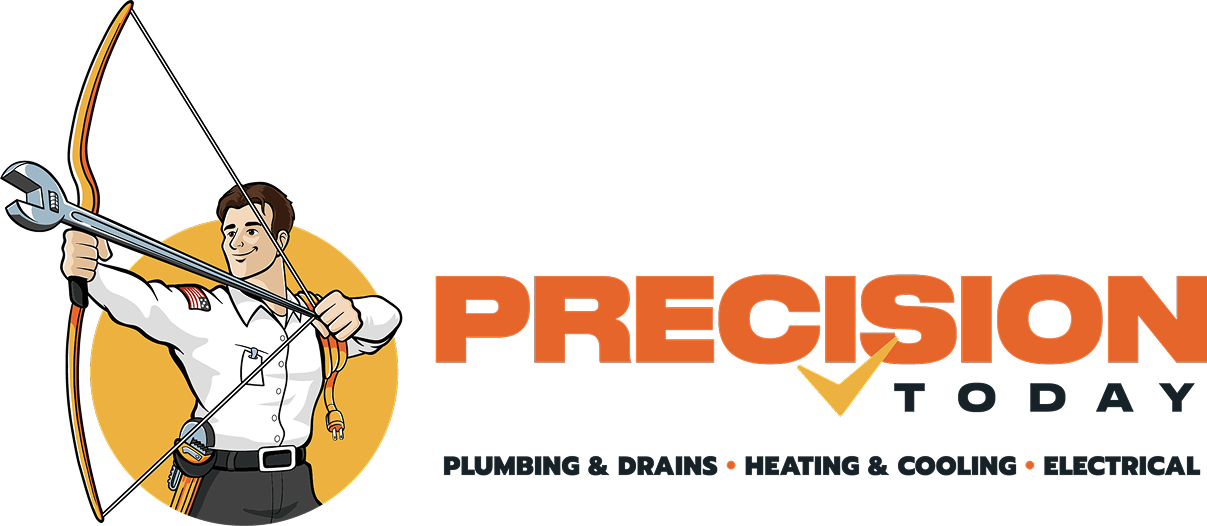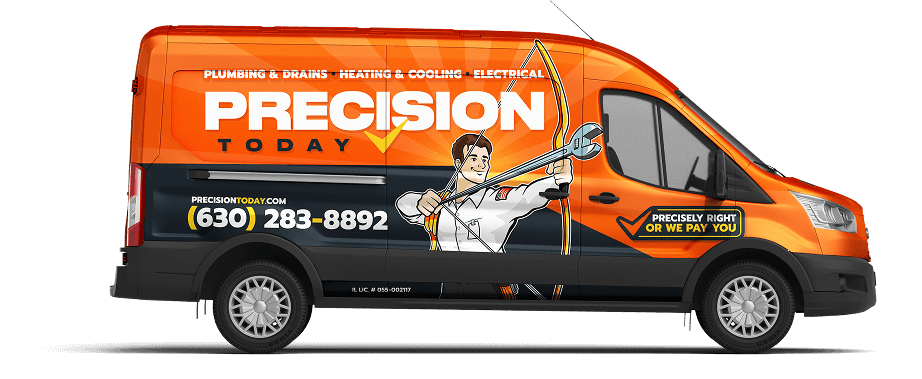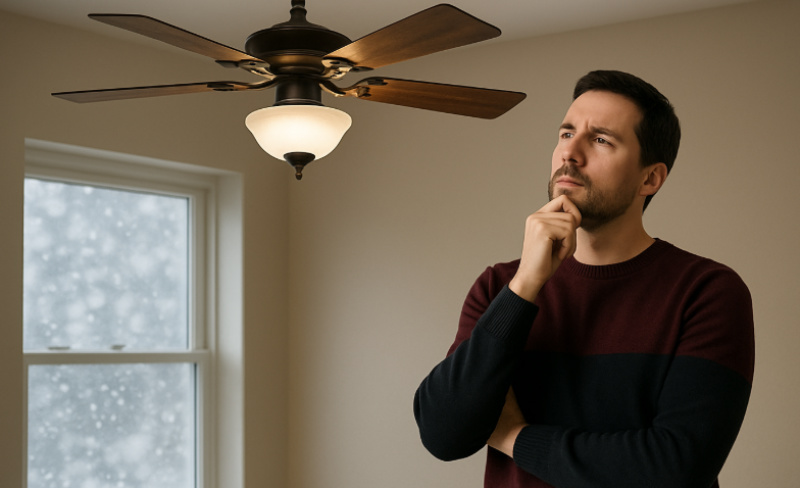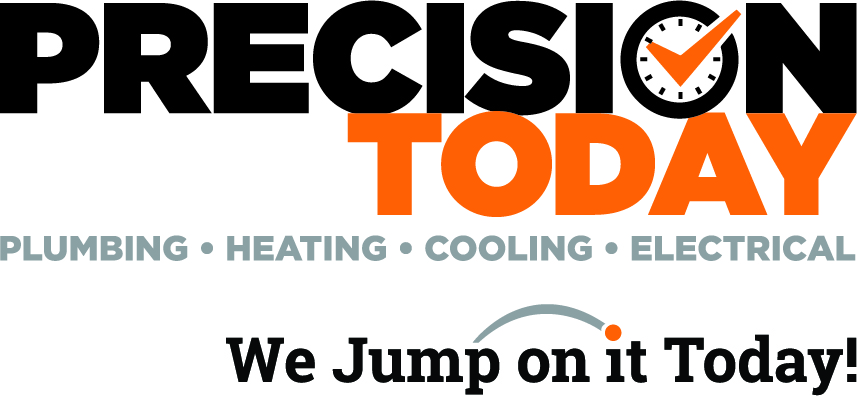Common Issues With Furnace During Winter
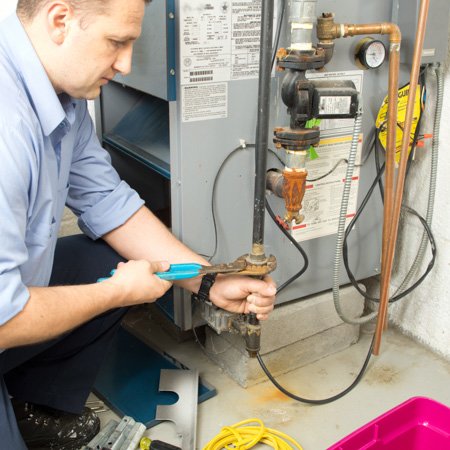
Chicagoland winters test even the toughest residents. When temperatures plummet below zero, a failing furnace creates more than just discomfort. It can lead to something more serious like frozen pipes, sky-high energy bills, and costly emergency repairs.
Local technicians see an increase in service calls during the coldest months. A cracked heat exchanger or failed blower motor can cost thousands to replace, yet many of these issues show warning signs long before complete system failure. All this could have been avoided through regular maintenance!
This guide breaks down the most frequent furnace problems that plague Chicagoland homes during winter. Some issues need immediate professional attention, while others have straightforward solutions that homeowners can handle themselves. Understanding these common problems – and knowing how to address them – helps prevent those middle-of-the-night emergencies when temperatures drop to dangerous lows.
Signs Your Furnace May Be Struggling
Modern furnaces typically run quietly and efficiently, so when something seems off, it usually is. Recognizing these warning signs early can mean the difference between a minor fix and a major repair during the coldest days of winter. Here are the key signals that your heating system needs attention.
Strange Symphony of Sounds
When a furnace starts making unusual noises, it’s speaking a language all its own. Banging or popping might signal delayed ignition issues in the burner. Rattling often points to loose components, cracked heat exchangers, or ductwork problems. High-pitched squealing typically means bearing problems or a failing blower motor. That rhythmic scraping? Could be a loose or broken blower wheel. These sounds rarely resolve themselves and usually worsen over time.
Temperature Tango
Notice some rooms feeling like the Bahamas while others remind you of the Arctic? Uneven heating throughout your home often signals ductwork issues, failing components, or an aging system struggling to distribute heat properly. Check for closed vents, blocked returns, and leaky ductwork. Sometimes the culprit is as simple as poor insulation or an incorrectly sized furnace for your home’s layout.
Bills That Make You Sweat
A sudden spike in energy bills, despite similar usage patterns, often reveals a furnace working harder than it should. When efficiency drops, costs rise – it’s that simple. This could stem from dirty filters restricting airflow, failing components, or a system that’s simply reached the end of its service life. Modern furnaces should maintain steady efficiency; significant bill increases often signal performance issues.
The Start-Stop Shuffle
A furnace that constantly cycles on and off isn’t just annoying – it’s inefficient. This “short cycling” wastes energy and puts extra wear on system components, potentially leading to premature failure. Common causes include overheating from restricted airflow, faulty thermostats, or incorrect furnace sizing. Left unchecked, short cycling can slash years off your system’s lifespan.
The Whisper Instead of a Roar
Weak airflow from vents means your home isn’t getting the heat it needs. Whether caused by clogged filters, ductwork issues, or failing blower motors, poor airflow makes your furnace work overtime while leaving you chilly. Check and change filters monthly during winter, and ensure furniture or drapes aren’t blocking vents. Sometimes the problem lies deeper in the ductwork or indicates a failing blower motor needing professional attention.
Common Furnace Issues in Winter
When winter tightens its grip on Chicagoland, furnaces work overtime to keep homes warm. Understanding these common cold-weather problems helps homeowners spot issues before they escalate into major repairs. Here’s what typically goes wrong during those brutal winters.
Dirty or Clogged Air Filters
Think of your furnace filter as its lungs – when they’re clogged, everything struggles. Dirty filters force your system to work harder, driving up energy costs while delivering less heat. During winter, filters need monthly checks and more frequent changes, especially in homes with pets or near construction sites. For Chicagoland’s notorious dust and allergens, look for filters with a MERV rating between 8-11 for optimal protection without restricting airflow.
Pilot Light or Ignition Problems
Those bitter winter winds can wreak havoc on pilot lights and ignition systems. A flickering or yellow pilot light often signals trouble with the thermocouple or gas supply. Modern furnaces with electronic ignition aren’t immune either – cold temperatures can affect sensor performance. While relighting a pilot light might seem simple, any gas-related issues deserve professional attention.
Faulty Thermostat
Sometimes what seems like a furnace problem actually starts at the thermostat. Dead batteries, incorrect settings, or aging wiring can cause temperature swings throughout your home. Smart thermostats offer precise and accurate control. But even these need proper installation and calibration for Chicago’s extreme temperature swings.
Wear and Tear on Mechanical Components
Winter pushes furnace components to their limits. Blower motors strain under constant use, belts wear faster, and bearings can seize without proper maintenance. Annual professional tune-ups before winter help catch wear issues before they lead to system failure during subzero temperatures.
Cracked Heat Exchanger
This serious issue demands immediate attention. Cracked heat exchangers can leak carbon monoxide – an odorless, deadly gas. Warning signs include unusual odors, soot around the furnace, or flu-like symptoms among household members. Never postpone repairs when carbon monoxide might be involved.
Frozen or Blocked Outdoor Vents
Chicagoland’s heavy snowfall can block crucial furnace vents, forcing systems to shut down or operate inefficiently. Regular checks during and after snowstorms prevent dangerous exhaust backup. Keep vents clear of snow, ice, and debris throughout winter.
Overworking Due to Poor Insulation
Many Chicago-area homes, especially older ones, leak heat through inadequate insulation. This forces furnaces to run longer cycles, increasing wear and energy costs. Adding insulation to attics, sealing drafty windows, and weatherstripping doors can significantly reduce the strain on heating systems.
Preventing Furnace Issues in Chicagoland
Nobody wants their furnace failing during a brutal Chicago winter. After decades of serving local homes, experienced HVAC technicians know that prevention matters more than repairs. Here’s what works to keep heating systems running when temperatures drop below zero.
Regular Maintenance and Tune-Ups
Think of furnace maintenance like a winter tire change – skip it, and you’re asking for trouble. Local heating specialists see it every year: the homes that skip annual check-ups often need emergency repairs during the coldest nights. Fall tune-ups catch worn belts, dirty burners, and failing parts before they leave families shivering. Book early though – appointment slots fill fast once the first frost hits.
Keeping Air Filters Clean
Downtown condos, suburban homes near construction, houses with pets – each faces different filter challenges. Some need monthly changes, others can go longer. The key? Check them regularly during heating season. Clogged filters make furnaces work harder and break sooner. But watch out with those premium filters – sometimes they’re too restrictive for older systems.
Properly Sealing Ductwork
Heat only helps if it reaches your rooms. Leaky ducts waste money and stress systems, especially in vintage Chicago homes. While hardware store tape might fix visible gaps, professional testing often reveals surprising problems. The cost of proper duct sealing usually comes back through lower heating bills within a few winters.
Addressing Drafts and Insulation
Chicagoland winds expose every gap in a home’s armor. Start simple – feel around windows and doors for cold air. Basic weatherstripping and door sweeps make a real difference. Older homes especially need attention up top – proper attic insulation keeps expensive heat from escaping through the roof. Basement rim joists often need sealing too.
Smart Thermostat Upgrades
New thermostats do amazing things with heating schedules and energy tracking. They learn patterns, adjust for weather, and spot potential furnace problems early. Local utilities even help cover the cost – making the switch practically pays for itself. Just make sure to pick one that handles Chicago’s wild temperature swings.
When to Call a Professional HVAC Technician
Not every furnace problem needs a professional, but some definitely do. After seeing countless DIY repair attempts gone wrong, local HVAC veterans agree – knowing when to call for help prevents costly mistakes and keeps families safe during Chicago’s harshest months.
Red Flags That Need Immediate Action
Gas odors mean drop everything and call now. Same goes for carbon monoxide alarms – no waiting, no second-guessing. Emergency technicians respond 24/7 for good reason. Burning smells, metallic banging, or a furnace that quits during a cold snap need quick attention too. That pilot light turned yellow instead of blue? Could signal carbon monoxide issues. Rusty flue pipes or window condensation might mean dangerous ventilation problems.
The Importance of Proper Certification
Today’s furnaces pack sophisticated technology alongside gas components. One mistake risks more than just comfort. Real HVAC pros earn tough certifications and stay current with safety standards. They understand local codes, carry solid insurance, and know exactly what high-efficiency systems need. Skip the handyman for gas appliances – proper training matters.
Finding Reliable Service
Ask around about HVAC companies. Neighbors who’ve lived through winters know who shows up at midnight when furnaces quit. Read those reviews carefully. Good companies explain things clearly and price work upfront. They document everything and back their work with real warranties. Watch out for anyone pushing new systems before checking the old one.
DIY Dangers to Avoid
Online video guides make everything look easy. But furnace repair videos skip crucial safety steps. Trying to fix flame sensors or adjust gas pressure without training creates expensive problems – sometimes dangerous ones. Many warranties die with DIY attempts. Smart homeowners know when to step back and make that service call.
The Role of Carbon Monoxide Detectors in Furnace Safety
Carbon monoxide doesn’t play fair – you can’t see it, smell it, or taste it. During Chicagoland winters, when homes stay sealed tight against the cold, this silent threat becomes even more dangerous. Local emergency rooms see the tragic results when furnaces malfunction and CO detectors aren’t working.
The Invisible Danger
Carbon monoxide sneaks up without warning. Early symptoms mirror the flu – headaches, nausea, dizziness. But unlike the flu, this threat can turn deadly within hours. Older furnaces, cracked heat exchangers, and blocked vents all risk releasing this poisonous gas into living spaces. Proper venting matters more than most homeowners realize.
Proper Furnace Venting
Watch those exterior vents during heavy snow. Blizzards love blocking furnace exhausts, forcing dangerous gases back inside. Check vents monthly – look for rust, loose connections, or bird nests. That white residue around pipe joints? Could signal trouble. Proper slope matters too – exhaust pipes need the right angle to work safely.
Carbon Monoxide Detectors Save Lives
Skip the bargain basement CO detectors. Place units on every level, especially near bedrooms. Replace them every 5-7 years, even if they still beep during tests. Battery checks matter most during heating season. When detectors signal trouble, treat it seriously – false alarms beat the alternative. Smart CO detectors now link to phones, adding protection even when nobody’s home.
Common Myths About Furnace Maintenance
Bad furnace advice spreads faster than gossip. After years of emergency winter service calls, local HVAC pros keep hearing the same costly misconceptions. Let’s set the record straight about what your heating system really needs.
“Wait Until It Breaks”
Some folks think skipping maintenance saves money. Truth is, that’s like avoiding oil changes until your car engine seizes. Furnaces give plenty of warning signs before total failure – weird noises, longer run times, uneven heating. Catch these early, you might spend hundreds. Wait too long? Now we’re talking thousands, usually during the coldest night of the year.
“Just Change The Filter”
Clean filters matter, but they’re just one piece of the puzzle. Thinking a fresh filter solves everything? That’s like believing new windshield wipers fix all car problems. Modern furnaces need regular safety checks, burner cleaning, and electrical testing. Those parts wear out whether you change filters or not.
“Maintenance Costs Too Much”
Here’s what really costs: emergency repair rates at midnight when it’s below zero. Or replacing a furnace years before its time because small problems grew into big ones. Consistent and regular check-ups catch worn parts before they fail. They keep efficiency high and heating bills low. Skip maintenance now, pay plenty later.
“My Furnace Is New – It Doesn’t Need Service”
New furnaces need care too. Actually, skipping early maintenance often voids those expensive warranties. Today’s high-efficiency systems pack complex parts that need proper adjustment. Even small issues can trigger system shutdowns or damage expensive components.
Tips for Preparing Your Furnace for Winter
Waiting until the first frost to check your furnace spells trouble. Those bone-chilling winds off Lake Michigan show no mercy when heating systems fail. A little prep work now saves major headaches later.
Early Bird Gets the Heat
Start your furnace prep while leaves still hang on trees. Test run the system before real cold hits. Listen for weird noises, check every room for heat, and pay attention to how it cycles. Burning dust smell? Normal for first start-up. Anything else? Better call service now, before emergency rates kick in.
Clean and Clear
Clear those return air grilles. Move furniture blocking vents. Vacuum dust from registers. Outside, rake leaves away from exhaust pipes. Check that plastic vent cover isn’t cracked – Chicago winters destroy these fast. Inside, clear the area around your furnace. Those old paint cans and boxes stored nearby? Major fire hazard.
Fuel and Filter Check
Gas furnace? Make sure lines look good, no rust or damage. Oil heat? Check tank levels now, not during January’s price spike. Replace that filter – but remember, super-thick filters can choke older systems. When in doubt, stick with what your furnace manual recommends.
Professional Once-Over
Book that tune-up early. Good HVAC companies fill their schedules fast once temperatures drop. Technicians check what homeowners can’t see – heat exchangers, gas pressure, safety controls. They spot worn parts before they fail. Think of it like winter tires – some preparations just make sense in Chicagoland.
Energy Efficiency and Furnace Issues
Those sky-high winter heating bills hit different. When your furnace struggles, your wallet feels it first. But before blaming those utility companies, let’s look at what really drives up those costs during our endless winters.
The Efficiency Drain
Old furnaces gulp gas like vintage cars guzzle fuel. Those 15-year-old systems might heat your home, but they waste plenty doing it. Dirty burners, loose belts, worn parts – each problem steals efficiency. That constant running noise from the basement? Usually means money floating right out your chimney.
Warning Signs of Waste
Watch those heating bills. Sharp jumps mean something’s wrong, especially if temperatures haven’t changed much. Rooms heating unevenly? System running longer than usual? These signs point to efficiency problems. That layer of dust on your registers isn’t helping either – it forces your system to work harder for less heat.
Simple Fixes Add Up
Some efficiency boosters cost nothing. Clear those vents. Change filters regularly. Set back temperatures at night. Others need small investments – programmable thermostats, duct sealing, better insulation. Even basic maintenance helps – clean burners heat better using less fuel.
Beyond Basic Repairs
Sometimes fixing isn’t enough. When repair costs keep climbing and efficiency keeps dropping, newer systems start making sense. Today’s furnaces use way less gas for the same heat. Sure, new units cost more upfront, but those monthly savings add up fast during winters.
Stay Warm and Worry-Free This Winter
Always keep in mind that furnace problems leave you in the cold. With over 30 years serving the greater Chicago area, Precision Today knows what it takes to keep homes warm when winter hits hardest. Our highly qualified technicians handle everything from quick fixes to complete system overhauls, always focusing on safety and efficiency as our priority. When it comes to your comfort, we jump on it today because tomorrow is too late!
Join thousands of Chicagoland homeowners who trust our Zero Problems Plan for worry-free winters. Same-day service means you won’t wait long when temperatures drop. Remember, prevention beats emergency repairs every time.
It is our number one priority to ensure that your home systems operate at peak performance. Call Precision Today at (630) 425-8995. Because when Chicago winters strike, you want experience on your side.



Join the Precision Today Zero Problems Plan! As a member, you’ll receive all these benefits and more:
- Seasonal HVAC Maintenance
- Priority service
- No dispatch fees
- Transferrable membership
- 10% discount on future repairs
When you sign up for the Zero Problems Plan, you'll gain access to exclusive discounts, providing everyday savings on the services you need.
Ready to streamline your plumbing, heating, cooling, and electrical maintenance needs? Join today by calling (630) 425-8995.
